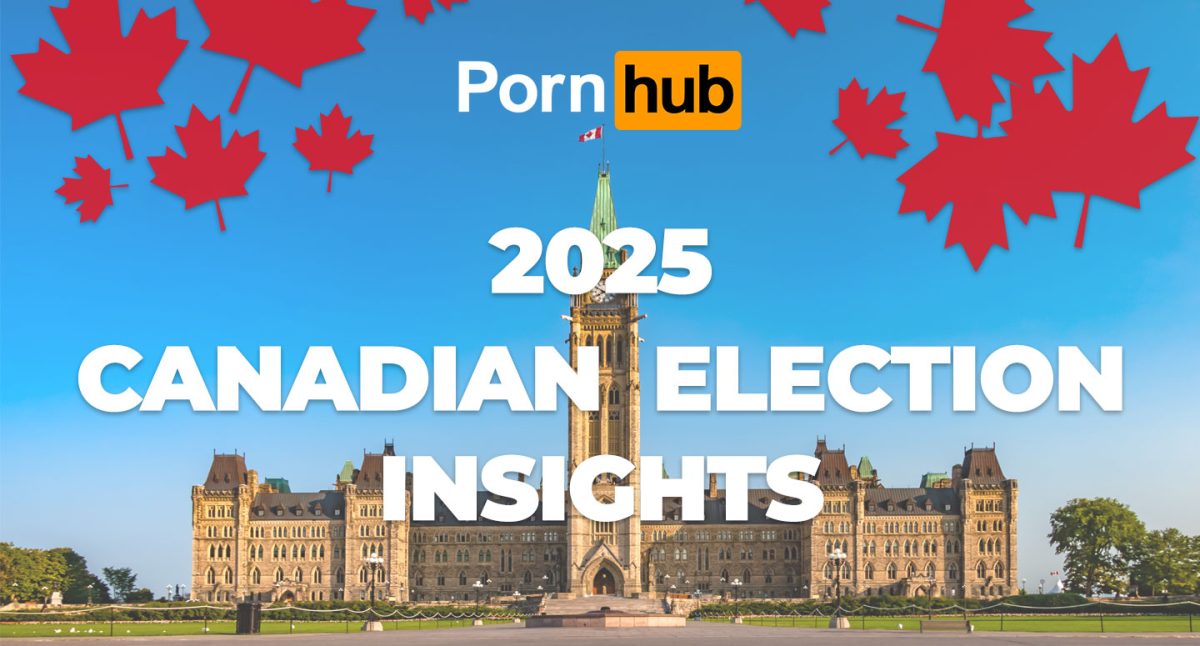On Monday, April 28, 2025, Canadians across the country went to the polls to vote in the federal election. Over 19 million Canadians took time out of their busy schedules to cast their vote, which, naturally, impacted their regularly scheduled visits to Pornhub.
Our statisticians were eager to dive in and see how election day altered traffic in our 10th top country.
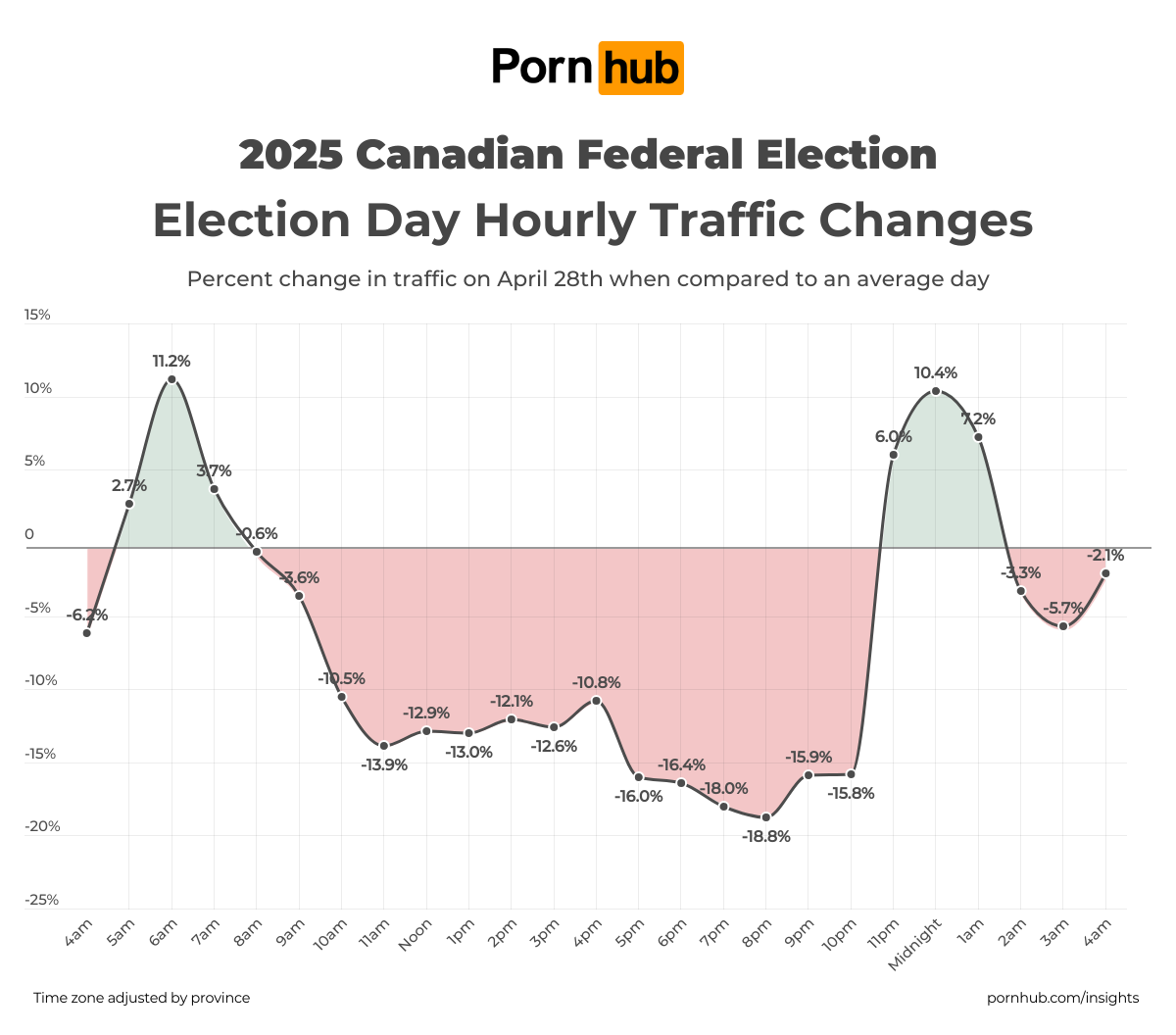
First, we looked at the hourly traffic. Numbers were starting to rise around 5 a.m. and by 6 a.m. reached their morning peak at +11.2% higher than average on a normal day. With a busy day ahead, Canadians seemingly knew sneaking a morning session in would hold them over for the day.
By 8 a.m. the numbers were below average. They continued to drop below –10% and fluctuated a bit while people were out voting during the day. They reached their lowest point of the day at 8 p.m. as people settled in for the night to start hearing the live election results, when traffic plummeted to –18.8%.
By 11 p.m., after the final polling stations had closed, traffic shot right back up to +6%. By midnight, +10.4% higher traffic were eager to take a load off compared to an average day.

Next our statisticians looked at how traffic impacted the provinces during the day. Overall, there was a –8.5% change in Canadian daytime traffic. Our statisticians adjusted each province for their appropriate time zones. Interestingly enough, the provinces differed quite drastically. For example, traffic was higher than average in BC, Manitoba and Quebec. While in the Maritime provinces, it got as low as –23% in Prince Edward Island. The northern part of the country remained below average all day too.
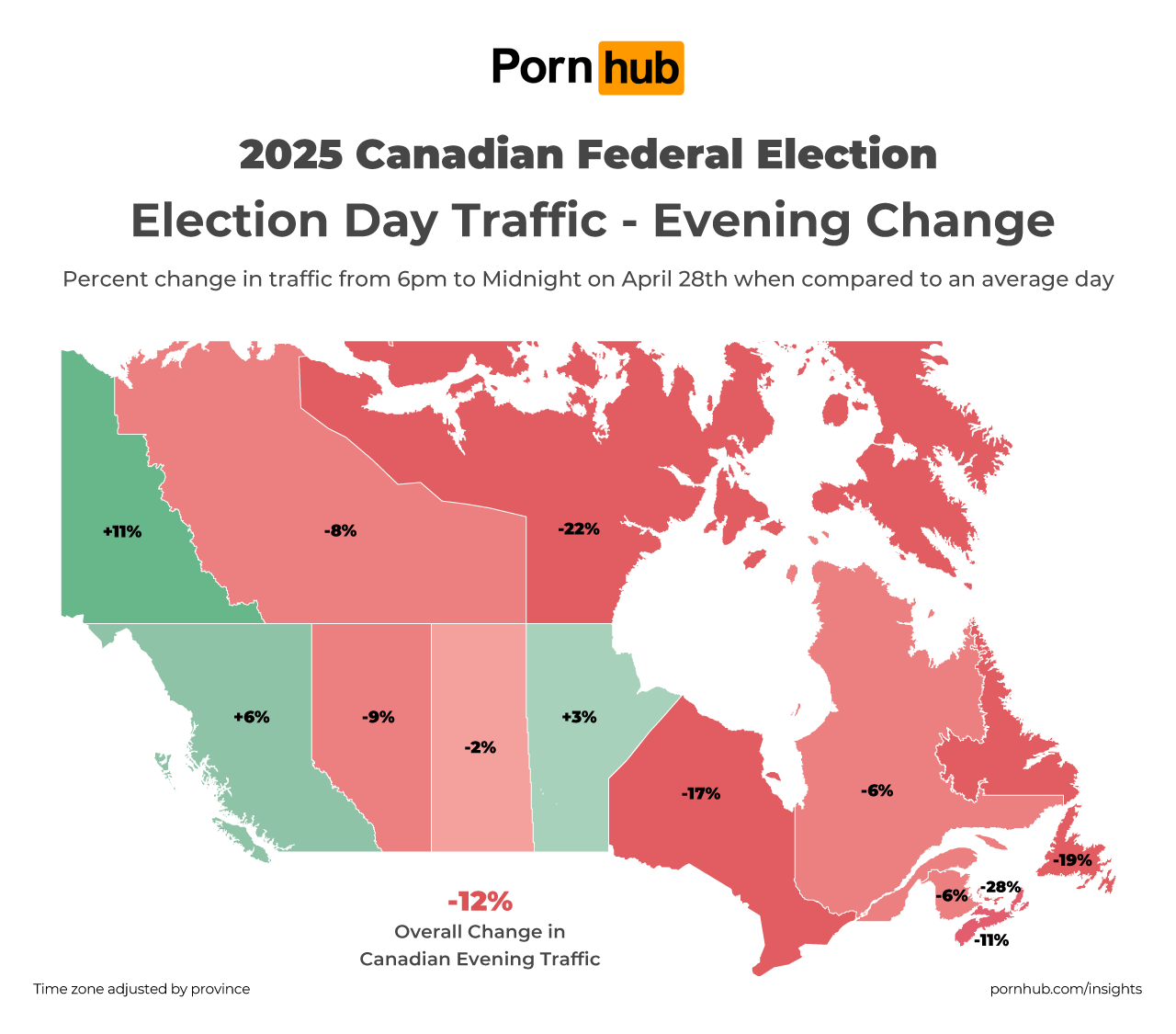
Then things changed a bit during the evening. From 6 p.m. to midnight, traffic was down even more, at –12% compared to an average day. This time, British Columbia and Manitoba remained above average, joined by Yukon Territory. Whereas Quebec fell below average. Additionally, traffic in Prince Edward Island dropped even further, landing at –28%.
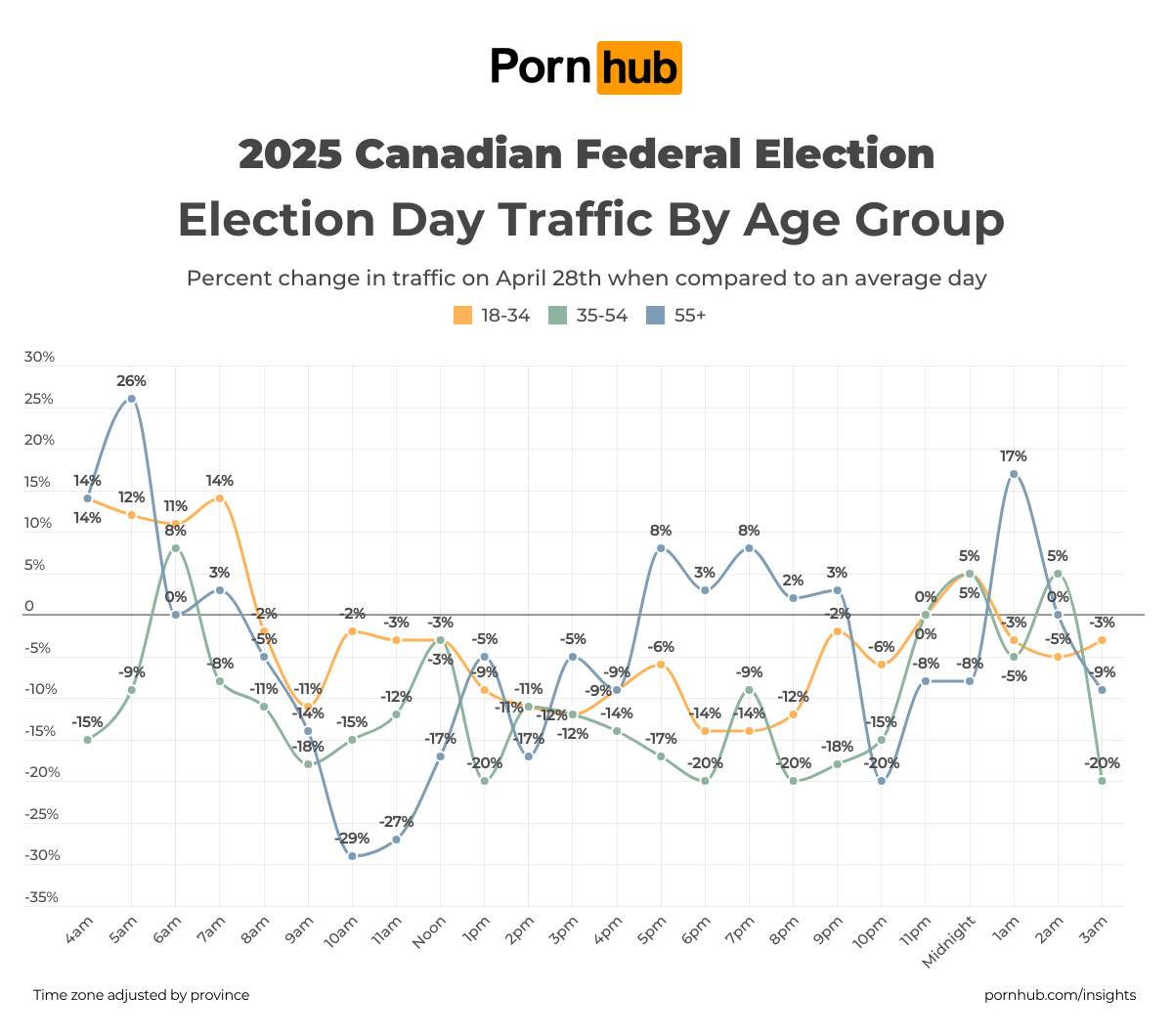
When our statisticians looked to see how traffic changed by age group, they found quite pronounced differences. The 18-34 age group were above average until 9 a.m. when they dropped to –11% compared to an average day. They remained below average until midnight, when the traffic hit +5% before dropping again.
The 35-54 age group remained well below average from 7 a.m. to midnight, when their traffic hit +5% above average as well.
The boomers, the 55+ age group, saw much sharper contrast. At 5 a.m. their traffic was +26% higher than average and dropped down to 0% by 6 a.m. By 10 a.m. traffic reached its lowest point of –29% below average. At 5 p.m. it was up +8% and by 10 p.m. when most Canadians were tuned in to follow the live election results, it was down –20%. At 1 a.m. it spiked back up to +17%.

Interestingly, male traffic to Pornhub was much higher in the early morning, reaching +11% by 6 a.m. In contrast, female traffic was below average in the early morning, reaching only +1% by 6 a.m. and dropping again immediately.
Traffic for both genders saw below average numbers until 11 p.m.
By 11 p.m., female traffic was much higher, reaching +9% by midnight while male traffic remained at +1%.
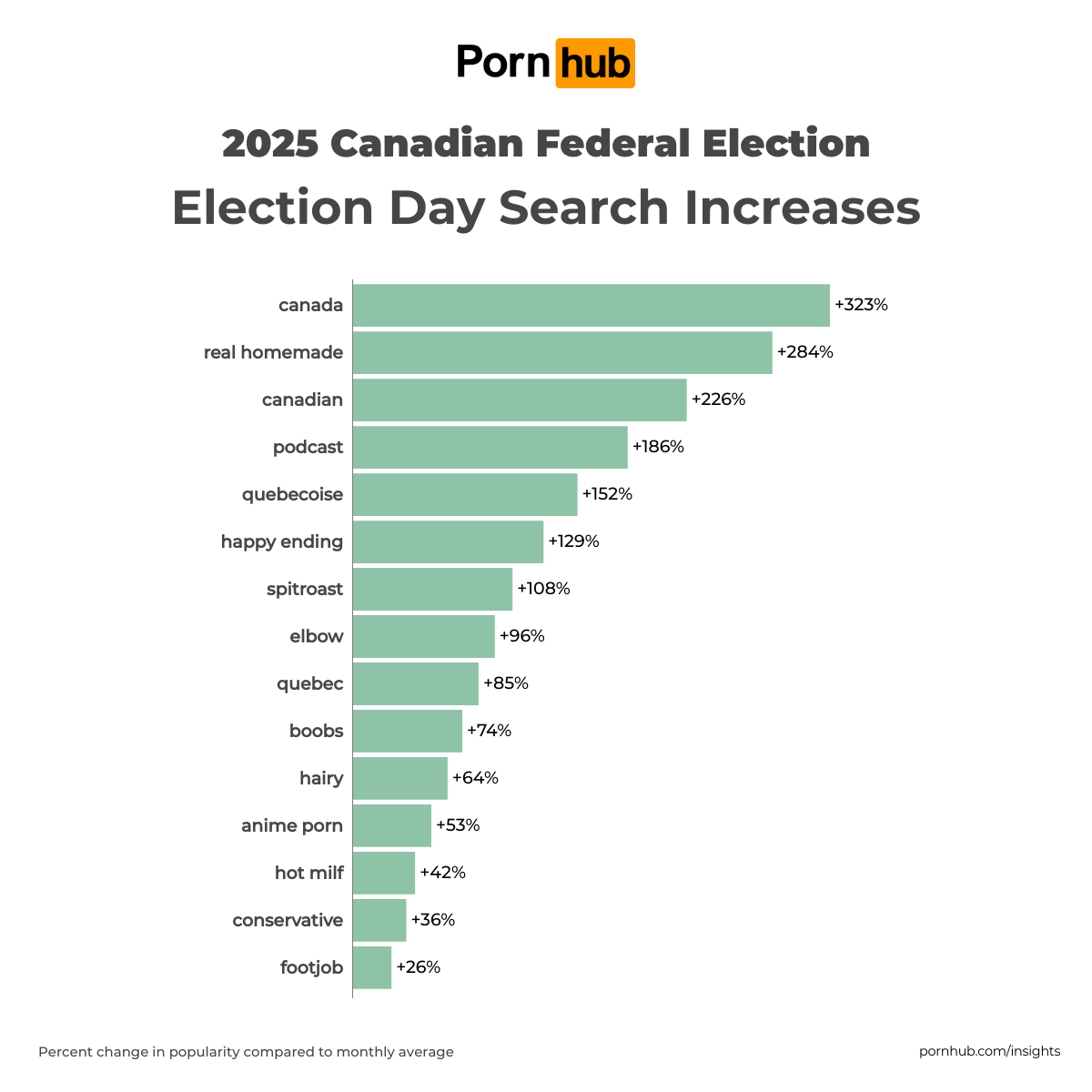
What about search increases? Our statisticians wanted to know what Canadians were searching for to get them hot and bothered. Unsurprisingly, “canada” was up +323% compared to their monthly average and “canadian” was up +226%. The term “real homemade” saw an increase of +284% and “podcast” saw an increase of +186%.
It seems they were thirsty for the Québécoise as well, with “quebecoise” seeing an increase of +152% and “quebec” an increase of +85%.
